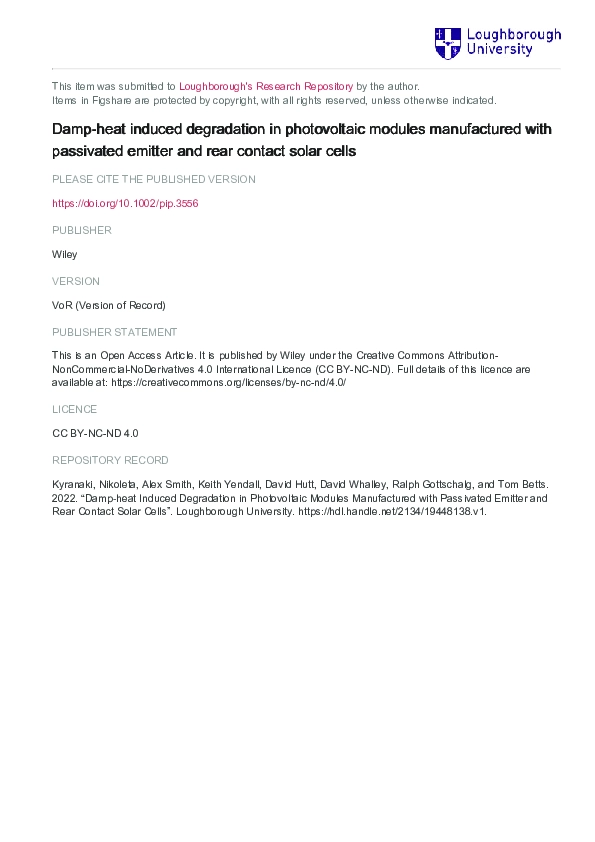- Welcome to, We are a professional factory specializing in the production of testing chamber equipment.
- WhatsApp:+8615112812380
站内搜索
菜单演示
相关推荐
If you’ve ever wondered how manufacturers ensure their products can survive tough, humid environments, the 85/85 damp heat test is where it starts. This test exposes materials and electronics to a constant 85°C temperature and 85% relative humidity for hundreds of hours—simulating decades of real-world stress in just days. Whether you’re in solar, electronics, or automotive, understanding this test is key to predicting long-term reliability and avoiding costly failures. Ready to unlock how the 85 85 damp heat test protects your products and why it’s a must-have in quality assurance? Let’s dive in!
What Exactly is the 85/85 Damp Heat Test Breaking Down the Basics
If you’ve wondered what the 85/85 damp heat test is, you’re not alone. At its core, this test is an accelerated environmental stress screening method designed to evaluate how well materials and products hold up under harsh heat and humidity conditions. The “85/85” refers to the test parameters: a constant temperature of 85 degrees Celsius combined with 85% relative humidity. This creates a controlled but aggressive environment that simulates long-term exposure to heat and moisture in a compressed timeframe.
Core Definition and Parameters
- Temperature: 85°C (185°F)
- Humidity: 85% Relative Humidity (RH)
- Duration: Usually ranges from 1,000 to 2,000 hours, depending on industry standards and test goals
- Purpose: To identify potential failures like corrosion, material degradation, and electronic component aging
This test is especially important because high temperature combined with moisture speeds up the breakdown processes that products might face outdoors or in harsh climates.
Historical Context and Origins
The 85/85 test has roots in early reliability testing developed in the mid-20th century. It evolved as industries like electronics, photovoltaics, and automotive sought more efficient ways to predict product lifespan without waiting years for real-world results. By applying rigorous heat and humidity stress, manufacturers could quickly pinpoint weaknesses and improve designs before mass production.
Test Chamber Setup and Standards Comparison
The test requires specialized double 85 test chambers that precisely maintain the temperature and humidity setpoints. These chambers are typically equipped with:
- Humidity sensors and temperature controls for constant monitoring
- Uniform airflow to ensure even exposure of specimens
- Data acquisition systems for logging condition stability
Compared to other environmental tests, the 85/85 damp heat test is focused specifically on consistent, extended exposure rather than cycling conditions. This makes it ideal for assessing corrosion resistance and moisture ingress rather than shock or thermal cycling.
Standards like IEC 61215 for photovoltaic (PV) module reliability and UL 1703 often include the 85/85 test as part of their certification process. Knowing the exact parameters and test chamber capabilities ensures your product meets the latest compliance demands while streamlining your quality assurance.
At Dexiang, we specialize in manufacturing precision double 85 test chambers designed to deliver reliable and repeatable damp heat testing that aligns with these key global standards. If you want to understand more about how this test fits your product’s reliability needs, keep reading—we’ll break it down step-by-step.
The Science Behind Damp Heat

Heat and humidity together speed up how materials and electronics wear out. When devices face the 85/85 damp heat test—85% relative humidity at 85°C—they undergo stress that pushes their limits faster than usual.
How Moisture Penetrates and Causes Corrosion
Moisture seeps into tiny cracks or porous materials. This water build-up leads to corrosion, especially on metal contacts and electronic circuits. Corrosion breaks down connections, causing failures. The warm environment speeds chemical reactions, making corrosion happen quicker.
Common Failure Modes
- Corrosion of metal parts like connectors and solder joints
- Delamination where layers in materials separate
- Insulation breakdown leading to short circuits
- Cracking and mechanical degradation of plastics or composites
Acceleration Factors
- High humidity creates constant moisture exposure
- Elevated temperature speeds chemical reactions and aging
- The combination forces failures to show early, cutting down test time
Real World Case Study
In the solar industry, PV modules tested under 85/85 conditions often reveal weak spots like frame corrosion or encapsulant delamination within weeks, instead of years in real weather. This helps manufacturers fix designs before mass production.
Understanding this science lets us appreciate why the 85/85 damp heat test is crucial for ensuring reliability in electronics, automotive parts, and solar materials.
Applications of the 85 85 Damp Heat Test Industries That Rely on It
The 85 85 damp heat test is a go-to for many industries in the U.S. where product reliability under tough humidity and heat conditions is critical. Here’s a quick look at where it’s most common:
- PV Solar: Ensures solar panels can handle long-term exposure to moisture and heat without losing efficiency.
- Electronics: Tests circuit boards, connectors, and components for corrosion and failure risk in humid environments.
- Automotive: Checks how automotive parts hold up inside vehicles exposed to heat and moisture.
- Materials: Evaluates coatings, plastics, and composites for durability.
Compliance and Certification Benefits
Using the 85 85 test helps companies meet key standards like IEC 61215 for solar modules and UL 1703 certification for safety. Passing these tests means:
- Confirmed product lifespan under harsh conditions
- Reduced warranty claims
- Easier market approvals and customer trust
Benefits by Industry Table
| Industry | Key Benefit | Certification Supported | Main Failure Mode Checked |
|---|---|---|---|
| PV Solar | Verified module reliability | IEC 61215, UL 1703 | Moisture-induced corrosion |
| Electronics | Prolonged component life | JEDEC, IPC standards | Insulation breakdown, corrosion |
| Automotive | Improved part durability | OEM specifications | Material degradation, shorting |
| Materials | Enhanced protective coating life | ASTM standards | Delamination, swelling |
If you’re in the U.S. market and working with humidity-sensitive products, the 85 85 damp heat test is essential to prove your product can handle the real world. It builds confidence and opens doors for selling in a competitive landscape.
How to Perform the 85/85 Damp Heat Test Step-by-Step Guide
Performing the 85/85 damp heat test properly is key to getting reliable, consistent results. Here’s a straightforward guide on how to do it:
1. Specimen Preparation
- Clean the samples thoroughly to remove dust, oils, or contaminants.
- Make sure the specimens represent the actual materials or products used in the field.
- Mount the samples securely so they don’t move during testing but still allow air and moisture to circulate.
2. Chamber Calibration
- Set the double 85 test chamber to 85°C temperature and 85% relative humidity.
- Verify calibration regularly with standard sensors to ensure accuracy and consistency.
- Make sure the chamber environment meets requirements from standards like IEC 61215 or UL 1703.
3. Exposure Process and Monitoring
- Place specimens inside the chamber, avoiding overcrowding for even exposure.
- Maintain the test conditions continuously, usually for 1000-2000 hours depending on the test standard.
- Monitor temperature and humidity closely to avoid fluctuation—consistent conditions are essential.
- Keep detailed logs of environmental parameters throughout the test.
4. Post-Test Analysis
- After completing the exposure, inspect specimens visually for corrosion, discoloration, or deformation.
- Conduct electrical or mechanical tests based on the product to identify functional degradation.
- Analyze data to identify common failure modes like corrosion, delamination, or component aging.
- Compare results to baseline data to evaluate performance under prolonged damp heat stress.
Typical Challenges
- Maintaining steady temperature/humidity over long periods can sometimes be tricky.
- Specimen contamination before testing may affect results, so prep is crucial.
- Some materials react differently, requiring custom monitoring or interpretation of results.
Following these steps ensures your 85/85 damp heat testing is effective, helping you assess product durability against extreme heat and humidity with confidence.
Standards and Compliance Navigating IEC UL and Beyond
When it comes to the 85 85 damp heat test, staying on top of standards is crucial for ensuring your products meet industry expectations. Various global and local standards guide how this test should be done, especially in sectors like electronics, solar, and automotive.
Key Global and Local Standards
- IEC 61215: Widely used for photovoltaic (PV) module reliability testing, specifying extended damp heat exposure at 85°C and 85% relative humidity.
- UL 1703: A U.S. safety standard for PV modules, requiring accelerated humidity testing including the 85 85 damp heat test to certify product durability.
- JEDEC JESD22-A102: Focuses on electronic components aging, describing temperature humidity bias methods to evaluate corrosion acceleration factors.
- MIL-STD-810G: U.S. military standard for environmental stress screening, often referencing damp heat tests to simulate harsh conditions.
Comparison Table of Test Parameters and Criteria
| Standard | Temperature | Humidity | Duration | Purpose |
|---|---|---|---|---|
| IEC 61215 | 85°C | 85% RH | 1000 hours | PV module damp heat reliability |
| UL 1703 | 85°C | 85% RH | 1000 hours | Safety certification for PV modules |
| JEDEC JESD22-A102 | 85°C | 85% RH | Varies hours | Electronic components aging test |
| MIL-STD-810G | 85°C | 85% RH | Varies | Environmental stress screening |
Dexiang Chamber Compliance and Advantages
Our Dexiang double 85 test chambers are designed to meet and exceed these standards. Here’s what makes them stand out:
- Precise control of temperature and humidity for consistent test conditions
- Reliable long-duration operation for extended damp heat exposure
- Easy chamber calibration aligned with IEC and UL requirements
- Energy-efficient design cuts down testing costs
- Local U.S. support team for quick service and technical help
Choosing Dexiang means your testing stays compliant with key industry standards while enjoying dependable performance. Reach out to us for a consultation or to learn more about how our chambers can fit your testing needs.
Dexiang Double 85 Test Chambers Precision Tools for Reliable Testing
At Dexiang, we specialize in manufacturing high-quality Double 85 test chambers designed to deliver precise and consistent results for the 85/85 damp heat test. Our chambers are built with advanced technology to maintain stable temperature and humidity levels—typically 85°C and 85% relative humidity—for extended periods. This makes them ideal for accelerated humidity testing across industries like solar PV, electronics, automotive, and materials science.
Brand Overview and Manufacturing Capabilities
Dexiang has decades of experience providing environmental test solutions tailored for the U.S. market. Our manufacturing process combines durable materials, smart control systems, and user-friendly interfaces. This ensures each Double 85 test chamber meets rigorous compliance standards such as IEC 61215 and UL 1703 certification requirements, giving you confidence in your product testing and certification.
Product Features
- Precise temperature and humidity control with minimal fluctuations
- Energy-efficient design for lower operating costs
- Easy-to-use digital control panels with data logging capability
- Flexible chamber size options to accommodate diverse sample sizes
- Enhanced corrosion resistance built into chamber components
Client Case Study
A leading U.S. solar panel manufacturer chose Dexiang chambers to improve their PV module reliability tests. Since switching to our Double 85 test chambers, they have noticed more consistent test data and reduced downtime thanks to our reliable environmental control systems. This has helped speed up their certification process while ensuring high product quality.
Contact Dexiang for Consultation and Sales
As an experienced environmental test chamber manufacturer, Dexiang provides dependable solutions for extended damp heat exposure testing. Our team is ready to help you select the right Double 85 test chamber, ensuring your products meet critical environmental stress screening requirements with confidence. Contact us today for a consultation or quote.
deruitest|chambe
我们是专业的WordPress网站建设团队,提供高品质的WordPress主题。新主题微信公众号:cntestingchamber.com,欢迎热爱WordPress的每一位朋友关注!
相关推荐
- How Many Types of Stability Chambers Are There Explained with Features
- What Is the Purpose of the Aging Test Explained for Manufacturers
- Incubator vs Environmental Chamber Differences Features and Uses Explained
- What Is an Environmental Test Chamber How It Works and Key Features
- What is the purpose of Environmental test chambers testing
© 2025. All Rights Reserved. cntestingchamber.com Theme By XinTheme









